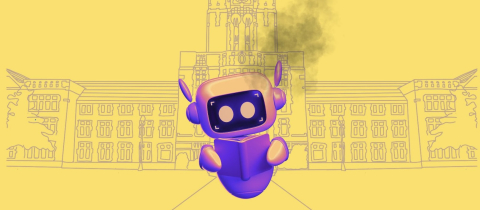The dog has been called man’s best friend, but rats certainly have never been referred to in that endearing fashion. Yet, they can save lives as well as dogs; maybe even better. How? By using their remarkable sense of smell. Dogs of course have a great sense of smell. A woman's dog had been known to save her life by constantly sniffing at a mole on her leg, which turned out to be a malignant melanoma. It seems that unusual protein synthesis as happens in such tumors is accompanied by unique odours. Indeed, the fact that diseases have certain smells has long been known. The ancient Chinese supposedly diagnosed some diseases by sniffing a patient’s saliva as it was dropped into a flame. But the human nose isn’t nearly as reliable as that of a rat.
Bart Weetjens, a Belgian researcher working in Tanzania came up with an interesting idea triggered by the Dutch word for tuberculosis, “tering.” It translates as “the smell of tar,” apparently because tuberculosis patients exude a tar-like scent. Weetjens wondered whether it might be possible to diagnose the disease in its incipient stage, when the human nose would pick up nothing, but a more sensitive one might. This would be of tremendous potential benefit because some two and a half million people a year die from TB, mostly in the developing countries. With early detection the disease is curable, but early detection is very difficult. In fact, it takes experts looking through a microscope at sputum smears taken over several days to confirm the presence of disease. Weetjens was familiar with some work using rats to sniff out landmines. The rodents were trained by rewarding them with food at the appropriate time to sniff out explosives. In Mozambique a dozen rats successfully sniffed out twenty land mines. And no, the rats didn’t blow up.
So if they could sniff out explosives, why not TB? Saliva from tuberculosis patients was put in little dishes and when the rats approached the samples they were rewarded with peanuts and bananas, which are rat delicacies. They learned well. When tested with 10,000 saliva samples, the trained rodents sniffed out the ones infected with the tuberculosis bacterium 77% of the time. They did even better when confronted by bacteria grown in culture dishes. They got these right over 90% of the time.
Now is your doctor going to reach into his drawer to take out a couple of rats on your next office visit? Probably not. Tuberculosis is not a widespread problem here in North America. But in sub-Saharan Africa or in Southeast Asia, rats just may be the way to go. And who knows? Eventually they may even be trained to sniff out other diseases. Cat scans have proven themselves, so why should we be surprised by a rat scan?







